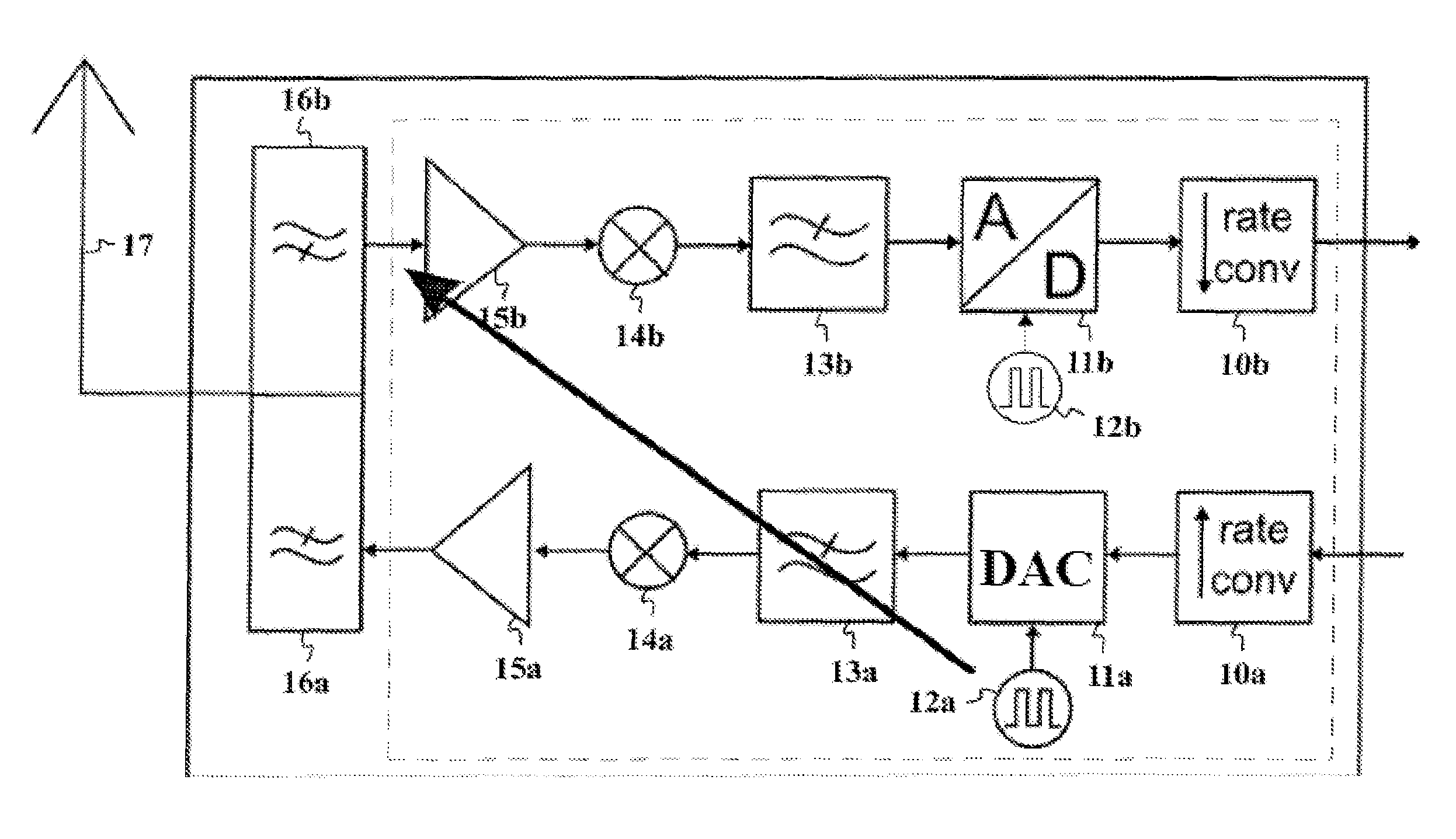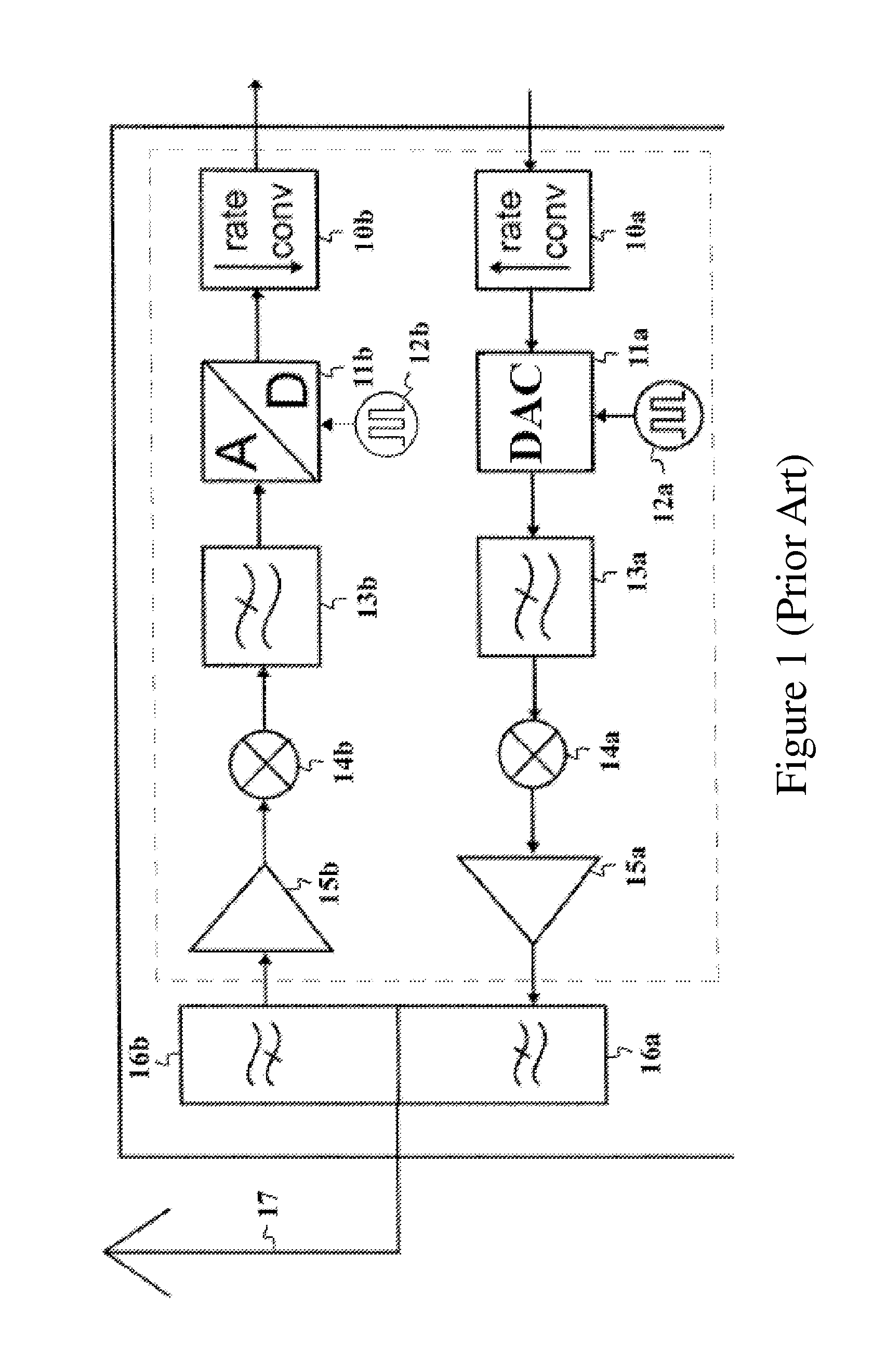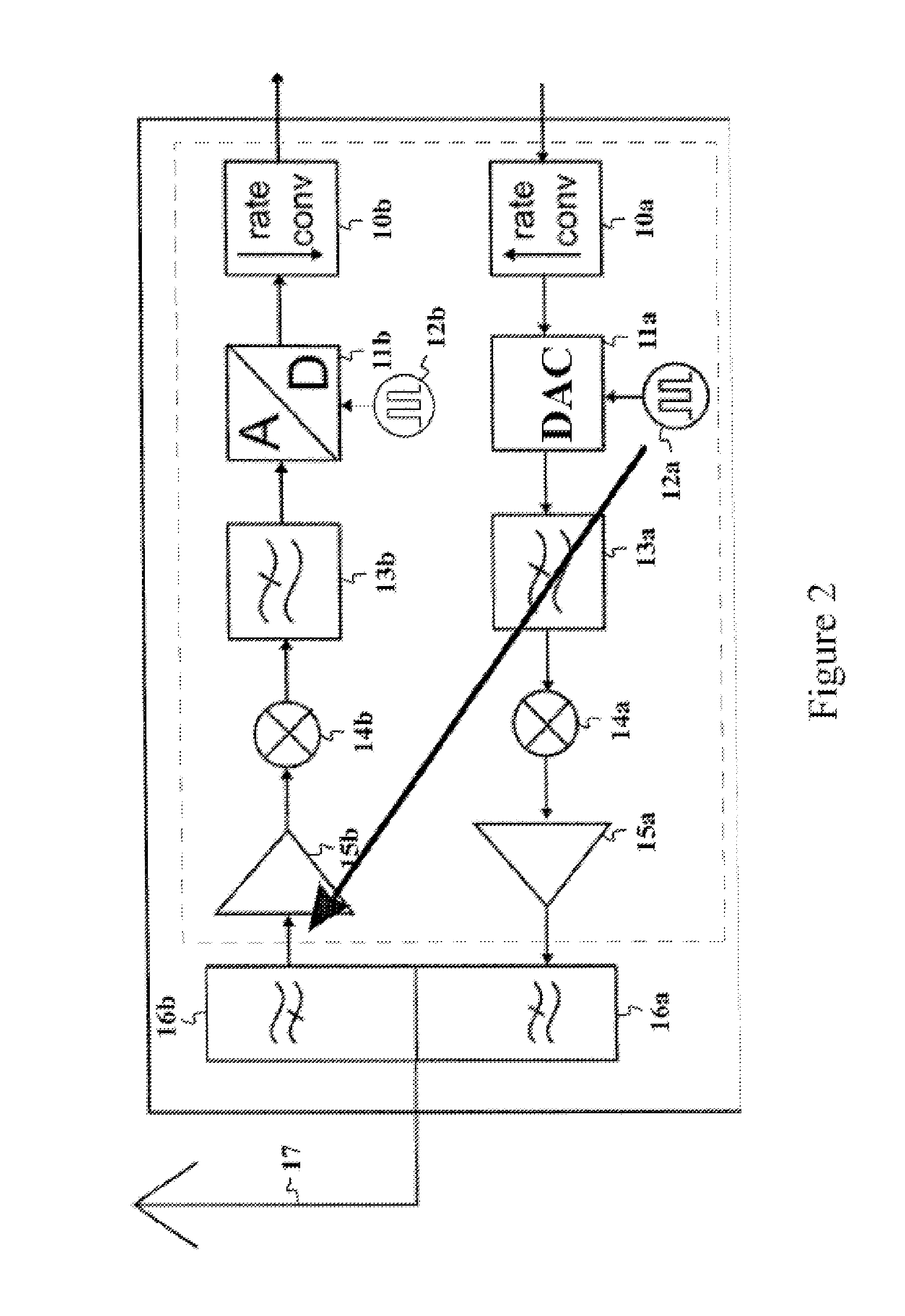Transmitter with a variable sampling rate
a transceiver and variable sampling technology, applied in the field of mobile communication networks, can solve the problems of reducing the quality of signal reception, affecting the detection of interfering signals, and introducing harmonic signal components, and achieve the effect of reducing the effect of spurious tones
- Summary
- Abstract
- Description
- Claims
- Application Information
AI Technical Summary
Benefits of technology
Problems solved by technology
Method used
Image
Examples
Embodiment Construction
[0042]Reference will now be made in detail to the embodiments of the present invention, examples of which are illustrated in the accompanying drawings.
[0043]The present invention discusses a method and an apparatus for mitigating effects created by interferences originating from digital clocks in the transmitter. Especially, the invention applies to clock signal(s) which define the operation of the digital-to-analogue converter (DAC). Furthermore, any clock giving the input to ADCs or DACs in the transceiver or the clock for a sample rate converter in the transceiver, may be determined and its frequency may be reselected in order to mitigate the effect of interferential spurious tones in the receiver.
[0044]Digital clock signals comprise a fundamental frequency and also harmonic components at multiples of the fundamental frequency. The level of each harmonic component decreases as a function of an increasing order of the harmonic component. Because the receiver signal path contains h...
PUM
 Login to View More
Login to View More Abstract
Description
Claims
Application Information
 Login to View More
Login to View More - R&D
- Intellectual Property
- Life Sciences
- Materials
- Tech Scout
- Unparalleled Data Quality
- Higher Quality Content
- 60% Fewer Hallucinations
Browse by: Latest US Patents, China's latest patents, Technical Efficacy Thesaurus, Application Domain, Technology Topic, Popular Technical Reports.
© 2025 PatSnap. All rights reserved.Legal|Privacy policy|Modern Slavery Act Transparency Statement|Sitemap|About US| Contact US: help@patsnap.com



